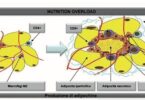The US Food and Drug Administration (FDA) has approved treatment for approximately 90% of patients with cystic fibrosis, many of whom had no approved therapeutic option.
Cystic fibrosis is a rare, progressive, and serious disease that causes thick mucus to build up in the lungs, digestive tract, and other parts of the body. This leads to serious respiratory and digestive problems, as well as other complications such as infections and diabetes. Cystic fibrosis is caused by a defective protein that is the result of mutations in the CFTR gene. Although there are approximately 2,000 known CFTR gene mutations, the most common mutation is the F508del mutation.
It approved Trikafta (elexacaftor/ivacaftor/tezacaftor), the first available three-drug combination therapy to treat patients with the most common cystic fibrosis mutation.
Trikafta is a combination of three drugs that target the defective CFTR protein. It helps the protein created by the CFTR gene mutation to work more effectively. Currently available therapies that target the defective protein are treatment options for some patients with cystic fibrosis; but many patients have mutations that are not eligible for treatment. Trikafta is the first effective approved treatment for patients 12 years of age and older with cystic fibrosis, who have at least one F508 mutation of the transmembrane conductance regulator (CFTR) gene, which affects 90% of the population with cystic fibrosis or approximately 27,000 people in the United States.
This is why we use all available programs, including Priority Review, Fast Track, Breakthrough Therapy, and Orphan Drug Designation to help expedite today’s approval as efficiently as possible while maintaining our high standards.
The FDA remains committed to advancing new treatment options in areas where patient needs remain unmet, particularly for diseases that affect children.
Terms used:
Cystic fibrosis:
It is a disease that causes the accumulation of thick and sticky mucus in the lungs. Hereditary disease.
Trikafta: This is a combination of three drugs that target the defective CFTR protein.
CFTR: The CFTR (cystic fibrosis transmembrane conductance regulator) gene is a protein that functions as a chloride channel.
https://med.stanford.edu/cfcenter/education/spanish/genetics.html







